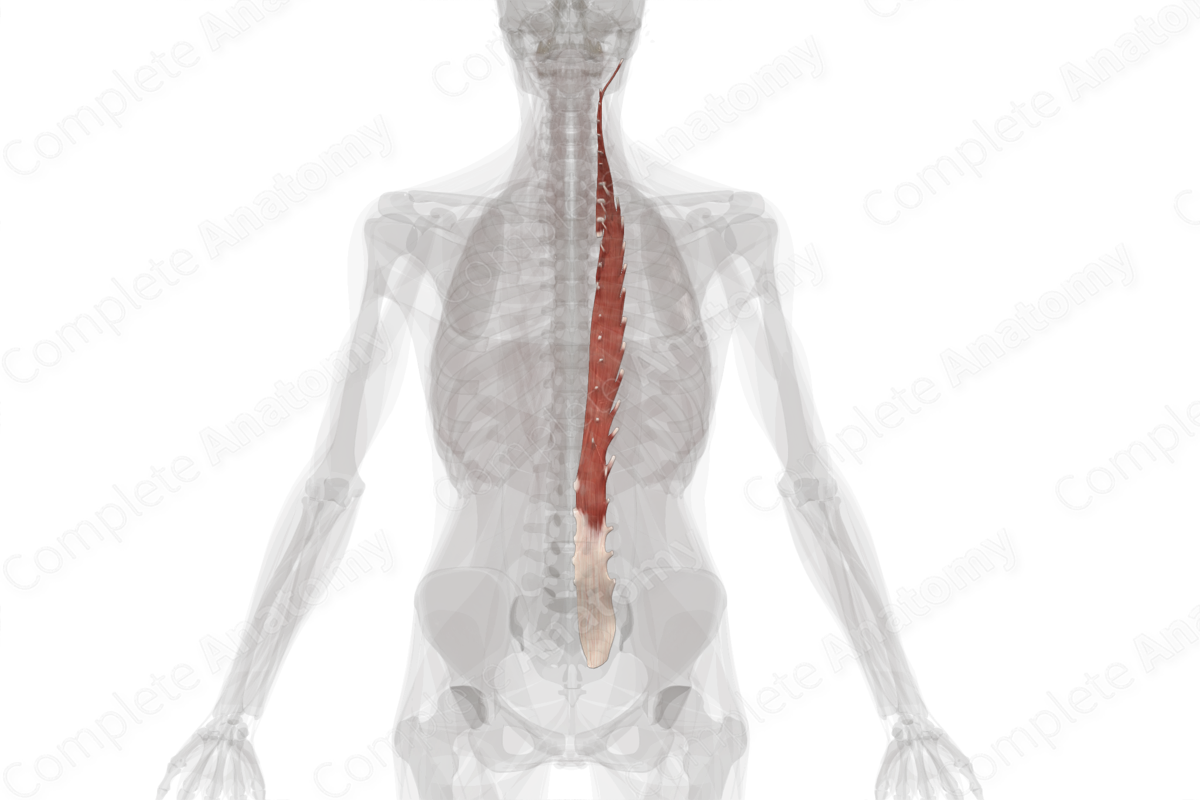
Quick Facts
Origin: Transverse processes of C4-T6 vertebrae, spinous processes of L1-L5 vertebrae, dorsal surface of sacrum, Iliac crest.
Insertion: Mastoid process of temporal bone, posterior tubercles of transverse processes of C2-C6 vertebrae, transverse processes of lumbar and thoracic vertebrae, second to twelfth ribs.
Action: Extends, rotates, and laterally flexes head; extends and laterally flexes neck and trunk.
Innervation: Lateral branches of posterior rami of cervical, thoracic, and lumbar nerves.
Arterial Supply: Occipital, deep cervical, vertebral arteries, dorsal branches of posterior intercostal and lumbar arteries, and lateral sacral arteries.
Related parts of the anatomy
Origin
The longissimus muscles originate from the:
- transverse processes of the fourth cervical to sixth thoracic vertebrae;
- spinous processes of all lumbar vertebrae;
- dorsal surface of sacrum;
- posterior end of iliac crest.
There can be variations between individuals regarding the origin sites for the longissimus muscles (Tubbs, Shoja and Loukas, 2016).
Insertion
The fibers of the longissimus muscles travel superiorly along the upper back and posterior neck regions and insert onto the:
- posterior aspect of the mastoid process of temporal bone;
- posterior tubercles of the transverse processes of the axis (second cervical vertebra) to sixth cervical vertebrae;
- transverse processes of all thoracic and lumbar vertebrae;
- dorsal aspects of the posterior ends of the shafts of all twelve ribs.
There can be variations between individuals regarding the insertion sites for the longissimus muscles (Tubbs, Shoja and Loukas, 2016).
Key Features & Anatomical Relations
In general, the longissimus muscles are the central-most muscles of the erector spinae. They are intrinsic muscles of the back and are found along the entire length of the back and posterior neck regions. They are long, flat skeletal muscles that are composed of three parts:
- longissimus capitis, which is the superior portion;
- longissimus colli, which is the middle portion;
- longissimus thoracis, which is the large, inferior portion.
The longissimus muscles are located:
- superficial to the ribs, and the external intercostal, levatores costarum breves, and levatores costarum longi muscles;
- deep to the sternocleidomastoid, splenius capitis, serratus posterior superior, rhomboid major, trapezius, latissimus dorsi, and serratus posterior inferior muscles, and the thoracolumbar fascia;
- medial to the iliocostalis muscle;
- lateral to the spinalis muscle.
Actions
The longissimus muscles are involved in multiple actions:
- during unilateral contraction, they rotate the head to the same side, and laterally flex the head, neck and trunk to the same side;
- during bilateral contraction, they extend the head, neck and trunk (Moore, Dalley and Agur, 2009).
References
Moore, K. L., Dalley, A. F. and Agur, A. M. R. (2009) Clinically Oriented Anatomy. Lippincott Williams & Wilkins.
Tubbs, R. S., Shoja, M. M. and Loukas, M. (2016) Bergman's Comprehensive Encyclopedia of Human Anatomic Variation. Wiley.
Learn more about this topic from other Elsevier products





